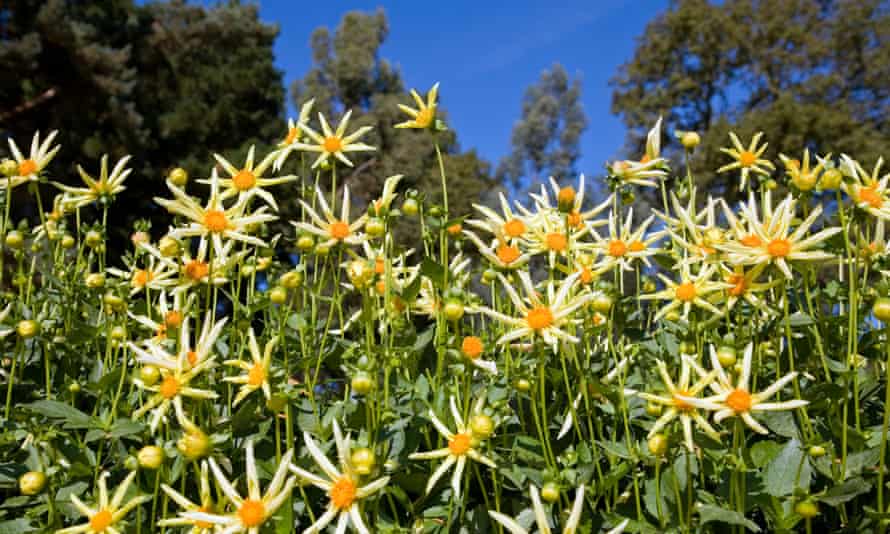[ad_1]
Pumpkins, grasses and seed-heads take centre stage at the Chelsea flower show as the deep, rich hues of autumn replace the fresh pastel spring palette usually on show over the event’s 108-year history.
Forced to cancel last year, and postponed from its traditional late May slot to late September this year because of the coronavirus pandemic, there will be unfamiliar sights and trends among the displays. Designers will be challenged to adapt to accommodate the change in season.
Late-flowering plants, such as asters, dahlias, penstemon, salvias, and autumn varieties of camellias and alstroemeria, will be among the stars of the show. Alongside those, displays will capitalise on autumn’s harvest, celebrating fruit and vegetables, and especially the bounty of squashes.
Fruit trees and berries are being used, such as those in the M&G garden by the investment bank sponsors of the flower show, which showcases bright orange berries and rose-hips. The heated-up colour palettes also take advantage of attractive leaves and foliage.
Ornamental grasses, at their very best in September, replace ferns and hostas, which usually deliver the fresh greenery in the designers’ spring palettes.
With many flowers fading in late summer and early autumn, seed-heads will offer interest and structure. The designer Robert Myers will be incorporating the seed-heads of foxgloves, Florence Nightingale’s favourite plant, into his garden named after her. Others have woven in teasels and sanguisorbas to embrace the season.
“We know what a challenge the change in season has presented for our exhibitors, and their amazing displays are a real testament to the skills and expertise of the growers, designers, contractors and everyone involved,” said Helena Pettit, the RHS director of gardens and shows.

“This year’s RHS Chelsea promises to be a unique moment in history, with new colour palettes, seasonal produce and later-flowering plants that autumn brings, alongside many plants and new exhibitors that we may not usually see at the show in May.”
Because of the pandemic, the show, which runs from 21-26 September in London, will recognise small balcony gardens for the first time. There was a surge in apartment gardening during lockdown. Container gardening will also feature.
“Balconies have been a lifeline for thousands over the course of the pandemic and the new category, a first at this year’s historic autumn event, will promote the benefits of plants for our health and the environment,” an RHS spokesperson said.
They include the Green Sky pocket garden by James Smith, described as an oasis away from city life, and Michael Coley’s Sky Sanctuary which uses a colour scheme of soft pastels and greens, along with recycled plastic.
Other gardens explore how the pandemic changed the relationship with nature for many. The sanctuary gardens category is especially for these troubled times. It includes Finding Our Way: an NHS Tribute Garden, designed by Naomi Ferrett-Cohen, for the University of Oxford and the Oxford university hospitals NHS foundation trust, and a celebration of those who have worked tirelessly throughout the pandemic.
Visitors will not miss the huge statement sweep of trees at the Queen’s Green Canopy garden inside the main entrance, at 433 sq metres the largest plot at Chelsea this year.
The designer David Dodd’s towering 21-tree space, highlighting the green and purple of the UK’s woodland, celebrates the beauty of our woods and meadows, and marks the Queen’s 2022 platinum jubilee tree-planting initiative. Among its 3,500 plants, including the September Charm anemone, three hay-bale sculptures represent the link between nature, agriculture and countryside.
[ad_2]
Source link


